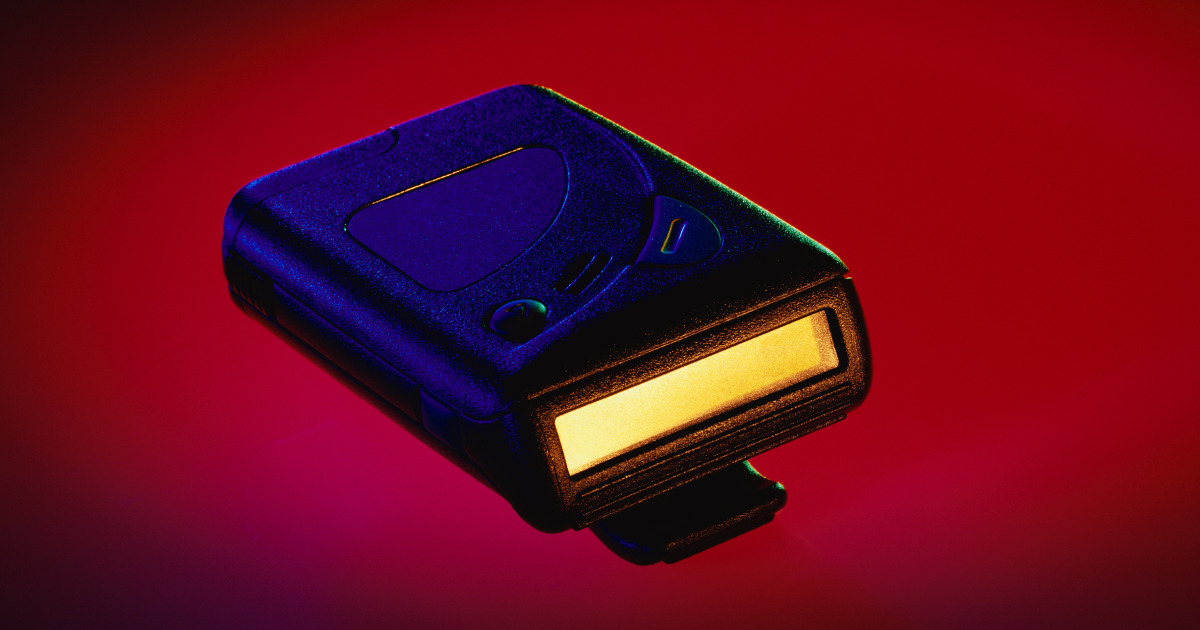Pagers, devices that are used every day as a crucial form of communication for health care professionals, became a deadly weapon Tuesday as thousands of them simultaneously exploded in Lebanon, killing 37 people and injuring thousands.
The explosions targeted the militant and political group Hezbollah, after the devices had reportedly begun beeping and heating up. The next day, another wave of wireless walkie-talkies exploded, killing 20 and injuring 450 others. Hezbollah blamed the explosions on Israel, with the group telling Al Jazeera that it holds the “Israeli enemy fully responsible for this criminal aggression that targeted civilians too.” Israel has not claimed responsibility for the attack.
The shocking incident raised a cascade of questions. Many were left wondering how pagers could have been transformed to cause such devastation.
What are pagers, and what are they used for?
Pagers are wireless communication devices that receive radio signals from short- or long-range paging networks.
Pagers are also able to function without cell service or Wi-Fi, making them especially reliable for their main users: hospital staff.
Pagers are most commonly used in hospitals, with a 2017 BMJ study finding that the devices have remained the top form of communication in hospitals in the last 25 years, despite the introduction of new technology. Doctors and nurses often turn to these devices to send updates or patient information to other members of a hospital’s staff without fear of internet troubles.
The pagers that exploded in Lebanon were made to appear as if they were Gold Apollo’s AR-924 pagers, but The New York Times reported that they were actually created by Israeli intelligence workers. The Gold Apollo pagers can receive messages at a frequency of 450 to 470 megahertz, which can ensure communication from around 36 miles away. The AR-924 model is alphanumeric, meaning it can send messages containing both numbers and letters. Like many other pagers, the AR-924 is a one-way device, meaning it is unable to send messages and instead only receives them.
Gold Apollo Co. denied that it had manufactured or designed the pagers that exploded — releasing a statement that those processes are “entirely handled” by the Hungarian company BAC Consulting KFT. BAC Consulting told NBC News that it was an intermediary, not a producer, in pager production. On Wednesday morning, a Hungarian government spokesperson posted on X that “the referenced devices have never been in Hungary.”
Why was Hezbollah using pagers?
The use of pagers has become increasingly common for the members of Hezbollah. The group ordered over 3,000 pagers from Gold Apollo, The New York Times reported, citing unnamed officials.
The group moved from cellphones to pagers earlier this year in an attempt to avoid having its communications intercepted by Israel, professor and regional security expert Amer Al Sabaileh told The New York Times.
Since Oct. 7 of last year, Israel and Hezbollah have been locked in a major escalation of their long-running conflict, with airstrikes and projectiles killing hundreds in Lebanon and several dozen in Israel. Following the explosions on Tuesday, Hezbollah told Al Jazeera that the “treacherous and criminal enemy will certainly be punished for this aggressive act.”
How did the pagers explode?
Experts say the most plausible explanation for how the pagers were engineered to explode is that they were tampered with during the manufacturing and shipping process.
Matthew Pines, director of intelligence at PinnacleOne Strategic Advisory Group, part of cybersecurity company SentinelOne, and a former cybersecurity and preparedness consultant for several U.S. agencies, said the operation “has all the hallmarks of a very successful supply chain attack.”
“Given the timing and scale (across Lebanon and Syria) and the operational importance, I doubt they would have relied on the pager network itself to trigger the explosion, but installed a receiver designed for that purpose,” he said.
John Brennan, the former CIA director, told NBC News that he believes there was some type of explosive placed in the hardware of the devices in order to carry out the attack simultaneously and on such an expansive scale.
“All suspicion has to rest on Israel for being the responsible party,” Brennan said.
Whom did the explosions affect?
Although the exploding pagers were in the hands of members of Hezbollah, a 9-year-old girl and an 11-year-old boy were also killed in Tuesday’s explosions, according to the National News Agency. Muhammad Mahdi, the son of a Hezbollah member of Parliament, was also killed in the blasts.
Two-hundred people were in critical condition in the aftermath of Tuesday’s explosions, the public health minister, Dr. Firas Abiad, told reporters. Iran’s ambassador to Lebanon, Mojtaba Amani, was injured by a blast, and the embassy later posted on X that he was in good condition.
The Lebanese Red Cross deployed 130 ambulances and had an additional 170 vehicles on standby to respond to Tuesday’s explosions. The next day, the organization sent another 30 ambulances to respond to the walkie-talkie explosions.
The American University of Beirut Medical Center posted a statement on Facebook on Sept. 17 saying it took in over 160 patients affected by the explosions. Doctors working at the hospital told NBC News that many patients had sustained serious injuries to their hands and eyes.
In its written statement, the medical center also addressed “rumors and conspiracy theories” regarding the pagers used at its institution. The post said the hospital had upgraded its paging system in late August in order to “enhance emergency and code communication,” adding that “several devices and systems had become obsolete.”

